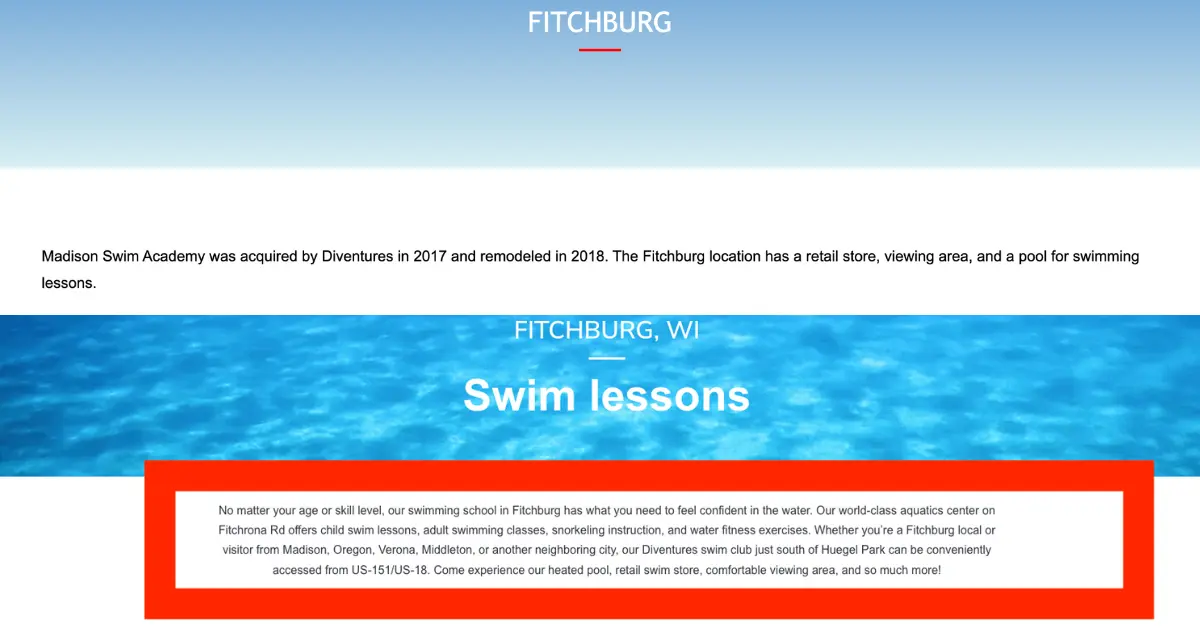Small business marketing isn’t a “set it and forget it” concept–if you want your business to grow, so must your marketing strategy. Whether your current marketing plan is working great, isn’t working quite as well as you’d like, or isn’t working at all, you should reevaluate your marketing plan every year to maintain or improve your performance. Below are the best ways to boost your small business marketing strategy in 2024.
- Conduct a Marketing Audit
- Create Location Pages
- Optimize Your Product & Service Pages
- Prioritize Google Business Profile Reviews
- Build Your Community
- Get Employee Feedback
- Reassess Your Buyer Personas
- Develop a Content Marketing Strategy
- Start Email Marketing
- Expand Your Social Media Marketing
- Consider Paid Advertising
- Remember Traditional Marketing Strategies
Conduct a Marketing Audit
To better your marketing strategy, you first need to know how your small business is doing. Running a marketing audit will help you analyze which strategies are working and which may need improvement. Here’s what you need to review in your marketing audit:
- Small Business Website: Are all of your links working? Is your contact and business information updated? Do your webpages load quickly and perform well in search?
- Social Media: Which social platforms are you using the most? Which platforms have the most engagement? Which platforms should you put less time and effort into based on these results?
- Content Strategy: Do you have an active blog strategy? If so, which posts aren’t ranking? Which are old and need updating?
- Local Listings: How many active local listings does your small business have? Is your NAP (name, address, phone number) data consistent online? Are there any local listing sites you’re missing that your competitors are on like Apple Business Connect or Yelp?
Create Location Pages
“The biggest issue I see with small business websites is a lack of optimization around their location. The amount of small business websites that just don’t have location pages or don’t include their city in very critical areas like title tags has always surprised me.” — Hurrdat’s Digital Strategy Director Aaron Mackel
It’s not enough to list your locations on your contact page or another portion of your website. You need to create location pages for each of your stores.
Without location pages, your small business website likely won’t appear in local searches relevant to your products and services—like plumber near me or Indian restaurant in Chicago.
The most important part of building location pages is to optimize them with hyperlocal keywords. Put your localized keywords in title tags, headers, and meta descriptions so search engines know to show your webpages in the right search queries.
For our client Hightower Reff Law, we optimized the SEO titles on their service pages to include localized keywords to catch more location-based searches.
- Before: Divorce
- After: Divorce Attorneys in Omaha, NE | Hightower Reff Law
Another client, Diventures, took their location page optimization plan a step further. In addition to using location title tags, we also improved on-page SEO with hyperlocal keywords in three new sections—the hero copy, available classes, and meet the team.


The result of this effort was over 200% increase in all website users and a 247% increase in new users, with individual location pages earning anywhere from 45% to 95% more traffic.
Optimize Your Product & Service Pages
“A lot of small business websites are too thin because they don’t have pages for their products and services. I recently looked at a family practitioner’s website in Albuquerque that offered sports physicals, hormone therapy, and other services that people seek out individually, but they were only listed on the homepage. Without individual service pages, that business will never rank for those offerings.” — Aaron Mackel
Just like with location pages, webpages dedicated to each of your business’ products and services will put you in the running for specific searches.
Yes, listing all your products and services on your homepage is better than nothing, but having product or service pages with optimized title tags and headers allows your small business website to rank higher for more detailed keywords.
For example, if you’re that family practitioner in Albuquerque who does sports physicals and other therapies, you should make separate webpages for each service. Each page should have their subject mentioned in an optimized title tag–like Sports Physicals in Albuquerque, New Mexico or Hormone Therapy Services Near Me. This way, when a student searches for “sports physicals near me,” (rather than the generic “family doctor” keyword that your homepage is optimized for), your business is more likely to pop up.
Prioritize Google Business Profile Reviews
“Every small business should make it part of their process to think about reviews and how they can make it easier for customers to leave them. I had an electrician do work at our house, and when he was done, he gave me a card to leave a Google review and mentioned to me that it helps them tremendously when they get new reviews. He said that if I felt they did quality work, they would appreciate my review.” — Aaron Mackel
Social proof is incredibly important for small businesses, and Google Business Profile reviews are a big part of that. A potential customer who stumbles across your business online for the first time can look at your reviews and be persuaded into choosing your company if a majority of your customers had a positive experience.
The problem is that most small businesses lack reviews, especially recent ones. While people care most about the average star rating on reviews, they also use your number of reviews and the recency of them to decide if they should do business with you.
To earn more consistent Google reviews, all you need to do is ask new customers for them. The simpler you make it for your customers to find your review page, the more likely they are to leave you a review. So, link your Google Business Profile on your business cards, leave-behinds, receipts, emails, or any other customer touchpoints. You can also post QR codes throughout your store that send customers directly to your preferred review platform to make it as straightforward as possible.
Build Your Community
If you’re not seeing as much repeat business from your existing customer base as you’d like, creating a brand community might be the solution. 66% of customers who are members of a brand community report being loyal to that company.
Here are some ideas on how to build an engaged, active audience on social media:
- Invite your customers to a small business Facebook group where they can ask questions, engage with other customers in the community, and get updates from your brand.
- Encourage your customers to follow you on Instagram, TikTok, and/or X (formerly known as Twitter) for fun polls in your feed or Stories and Reels they can stitch.
You can also grow your community by building a loyalty program. Customers who sign up can get exclusive deals or early access to sales.
Get Employee Feedback
Your employees are on the front lines of your business, interacting with customers on a daily basis. They have a unique perspective on what customers like and dislike, what they’re looking for in your products or services, and what pain points they have that your current marketing strategy may be ignoring. These insights can help you identify new marketing opportunities or refine your existing content so it more closely follows your audience’s buyer journey and better addresses the challenges your customers face.
Follow these tips when requesting feedback from your staff:
- Make it easy: Create a form or survey that can be completed anonymously in under five minutes.
- Encourage honesty and candidness: Let everyone know that their feedback is valued and that it will be used to improve the business.
- Follow up: Let employees know what you’ve done with their feedback and how it has impacted the business.
Here are a few examples of feedback you might receive from your employees and what you can do about it:
- If your employee says “Customers are often confused about how to use our new product,” you could create a video tutorial for your website and social media.
- If you hear “Customers ask for more information about our sustainability practices,” you might write a blog post about your sustainability initiatives and promote it on social media.
- If someone writes “Customers are complaining about the long wait times for customer service,” consider hiring more customer service representatives or setting up a chatbot.
Reassess Your Buyer Personas
Your customers and their preferences and challenges will inevitably change over time. You need to adapt your strategies to these changes if you want to successfully market to them. Some audience segments may have different motivations or preferences, some may not be serving your marketing goals anymore, or you may even find new audience segments.
You can ask your employees for customer insights, but going straight to the source (your customers) is the best way to start improving the accuracy of your target audience. To review your buyer personas, follow these three easy steps:
- Gather data: Survey your customers for their suggestions and preferences. Also look at customer support tickets, Q&As, FAQs on your Google Business Profile and website, reviews, and website analytics.
- Analyze data: What are the most common issues your customers mentioned? Is it reasonable for you to fix them? How can you use the information to better serve and market to certain groups of customers?
- Update buyer personas: Use the answers to the above questions to update the information you have on your current customers and marketing strategies.
Here is this process in practice. A boutique clothing store looked through their online reviews and customer surveys and found these common complaints:
- Customers only received an email or saw social media posts about promotional announcements the day a sale began, which didn’t allow them enough time to take advantage of the sale.
- Certain customers were frustrated with the amount of slang used in marketing materials, either finding it forced or not understanding it.
After looking at this feedback, the business modified their marketing schedule to start posting and emailing announcements for upcoming promotions two weeks earlier. They also reworked some of the content on their website and in marketing materials to make the language more neutral and clear.
Develop a Content Marketing Strategy
Writing a business blog provides your customers with useful information about your brand and the products and services you offer. And small businesses with blogs generate around 67% more leads than those without.
However, that doesn’t mean that every business should create a blog. An effective small business blogging strategy takes a lot of time and maintenance. Without a clear plan, your blog could do more harm than good. If the rest of your marketing strategies are in great shape and you have the resources to sustain your efforts, you should consider blogging for your small business.
If your business already has a blog, it’s not a bad idea to revisit your content strategy. Even with an evergreen content strategy, information in your blog posts can become outdated, links can stop working, and your posts may stop ranking. It’s recommended to do a full-scale content audit once or twice a year, with smaller-scale or partial audits every month to make sure your content is moving in the right direction. During your content audit, you should:
- Reoptimize content that is performing well or has high potential.
- Assess your blog topics and content calendar–are you posting content that’s useful to your audience or simply producing content to produce it?
- Compare your content to your competitors. They might be covering a popular topic that you’ve missed.
Start Email Marketing
“Email marketing is so effective and one of my most recommended digital marketing strategies for small businesses. I always encourage small business owners to have a strategy in place on how to collect emails from customers so you can easily grow your email list.” — Aaron Mackel
Email marketing has the highest ROI of any marketing channel, yet only 64% of small businesses use it in their marketing strategy. This direct marketing channel is an effective form of inbound marketing since customers are actively selecting to receive information about your business as opposed to paid marketing which forces you in front of people who didn’t sign up to hear from you.
Even if your small business has an email marketing strategy in place, check to see if you can expand it. If you’re only sending out blast emails during important events, start up a consistent small business newsletter. Use a good small business marketing AI to automate welcome and retargeting emails.
Expand Your Social Media Marketing
If your business is seeing success on social media, the obvious move is to continue doing more of it. That might look like ramping up your social media content calendar, partnering with influencers, or being active on more social media platforms.
First, make sure your current social media marketing initiatives are serving you well and the content you’re producing still provides value to customers. Then, ask yourself the following questions to help you decide if your business should create an account on another social channel:
- What is the largest demographic on this platform?
- Is a large amount of my target audience already on this platform?
- What new features on this platform could my business use?
- Can I repurpose my content from other social media platforms on this one?
Consider Paid Advertising
A strong organic marketing strategy should come first because it’s more budget-conscious and sustainable for small businesses than paid advertising. But once your organic SEO tactics are in place, you might supplement your plan with a beginner-friendly paid marketing strategy. With paid advertising, you can see quicker results and better targeting capabilities.
Plus, you don’t have to start from scratch with paid campaigns. Repurpose old marketing creative to make paid ads for search, or boost an existing social media post.
With any aspect of PPC advertising, you’ll need to have the time to consistently check your keyword bids and research which keywords are going up and down in price. However, the short-term boost in website and social media traffic is the reward.
Remember Traditional Marketing Strategies
“Sometimes, physical marketing materials work best. I talked with an HVAC guy who went ten years without a vehicle wrap. Last year, he put one on and constantly gets calls now because of it. Similarly, a restaurant opened and got a really slow start because people driving by didn’t know anything about them, so they installed window designs that featured some of their top menu items and that got them a lot of customers.” — Aaron Mackel
It’s easy to assume “old school” marketing methods can’t compete with digital marketing efforts anymore. But there are still plenty of physical marketing channels that local businesses can and should take advantage of to build brand awareness and attract new customers.
For one, signage at all your stores need to be easily viewed, attractive, and consistent across multiple locations. This is the first impression customers will have of your business, so make it a good one. If you’re a service-area business who doesn’t operate out of a storefront, vehicle wraps can work in a similar way. Just be sure people can easily read your company name, services, and contact information on your vehicle wrap to win customers on-the-go.
Lawn care companies, plumbers, realtors, and other types of local businesses may also use these physical marketing materials to promote their business:
- Banners
- Business cards
- Brochures
- Door hangers
- Flags
- Flyers
- Postcards
- Yard signs
- Etc.
Need help boosting your small business marketing strategies? Local Search Fuel by Hurrdat can help with affordable starter deals like Google Profile Boost and the Local SEO Starter Package, as well as a lineup of local SEO services to help small business owners elevate their marketing presence. Get started today!

Stefanie Vanderbeek
Stefanie Vanderbeek is a content strategist and writer who specializes in long-form digital content and website SEO optimization. Stefanie earned her Bachelor of Journalism from the University of Nebraska-Lincoln in Advertising and Public Relations in 2021. In her free time, you can find Stefanie reading, deep diving into video game lore, singing in her professional vocal group, or traveling the world!
